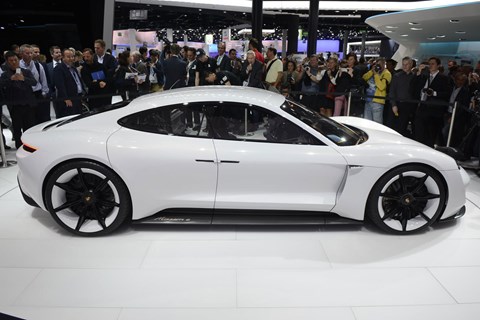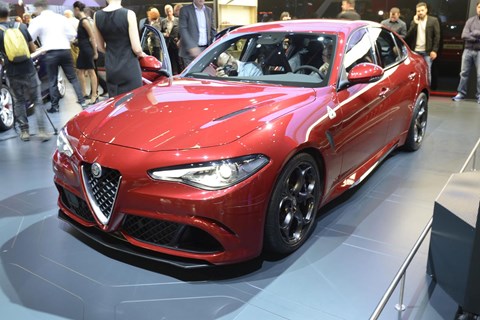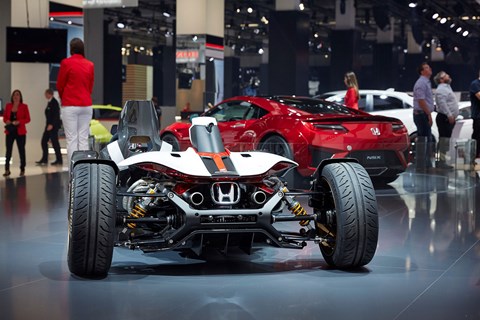► Gavin Green reviews Frankfurt show
► The highs and lows of the IAA 2015
► A seasoned show goer’s perspective
In that biennial motoring muscle contest known as the Frankfurt motor show – where expensive and needlessly expansive stands tout the collective might of the German car industry – it was probably the Volkswagen group that, this year, pumped its pecs most impressively. (I scored it: 1st Volkswagen 2nd BMW 3rd Mercedes-Benz.)
The Audi E-tron Quattro was the home star. It is, to my eyes, the first good-looking SUV from the VW group: elegant, not too bulky, and impressively aero (Cd 0.25). Just as praiseworthy is its battery electric tech: a 300-plus mile range, 0-62 in 4.6 sec, fast charge in 30 minutes and four-wheel steering. It’s no concept car fantasy either: a machine similar stylistically – with the same performance – will be on sale by 2018, Audi tech boss Ulrich Hackenberg told me.
Cynics may point out that the range and performance are barely any better than a Tesla on sale today. And they’d be right. Which maybe just goes to show that the Germans really shouldn’t be too smug…

Meanwhile, the roll-call of new German cars was extensive: from the elegantly mainstream (Audi A4) to the awesomely high-tech (BMW 7), from glamorous (Mercedes S-class Cabriolet) to avant-garde (Porsche Mission E), from miniature (Smart Cabrio) to marvellous (new Porsche 911). There was even a new Bugatti concept, more preposterously fast than the ridiculous Veyron, although this one is more usable: it will have a ’virtual’ life as a Gran Turismo video game car.
Some impressed. The new BMW X1, for instance, is a huge step on from its dreary predecessor (the old X1 was proof that a good badge could sell a poor car). Plus how can a new 911 fail to excite – although I’ll admit to sadness now that all 911s are turbocharged. If you own a naturally aspirated 911, treasure it.
Still with Porsche… the Mission E looked fantastic. At last, a handsome four-door Porsche! It follows a succession of lumpy Cayennes and misshapen Panameras. Its style presages a new sub-Panamera sized Porsche sports saloon, apparently.
But if Europe’s strongest (German) carmakers dominated Frankfurt’s agenda, my production-car stars came from three of Europe’s serial sales underachievers (Alfa Romeo, GM and Jaguar).

The new Giulia may (finally!) kick start sales success for Alfa Romeo, after three decades of false dawns, substandard cars and management hype. Let’s hope, for a change, this is an Alfa that drives as well as it looks – an essential prerequisite for success. A new rear-drive platform offers a promising start.
The new made-in-UK Astra impressed mightily: what a fine job design boss Mark Adams does for GM’s European look, and what a commendable job GM’s engineers have done to shed 130kg of weight on average (it’s pleasingly shorter than the old Astra, too, by 49mm). There are more reasons than ever now not to buy another Golf or Focus.
Jaguar showed the F-Pace, grace meets pace and space. If Jaguar really can match the dynamics of the brilliant Porsche Macan – its goal – then the F-Pace will be quite a car.
Finally: the car I most wanted to get in and drive. That’s the crazy MotoGP powered Honda Project 2&4 concept, 212bhp meets 405kg meets 14,000rpm redline – painted in the same delectable and romantic white and red colours of Honda’s ‘60s F1 car.
As with Alfa Romeo, Honda seems determined to make great drivers’ cars again. That, more than any home team muscle flexing, was reason enough to be cheerful at Frankfurt.
